Arrivals, façades, first impressions
Ponta Delgada is the point of arrival for most visitors to São Miguel. Planes dip through clouds to land at João Paulo II Airport, just outside the town. Ferries and cargo ships pass in and out of its working port. As the island’s largest city and commercial heart, it handles the weight of the archipelago’s external gaze—its airport signage, welcome centers, harbor infrastructure, and tourist-friendly street furniture. It performs the role of “main town,” even as its edges blur quickly into farmland and shoreline.
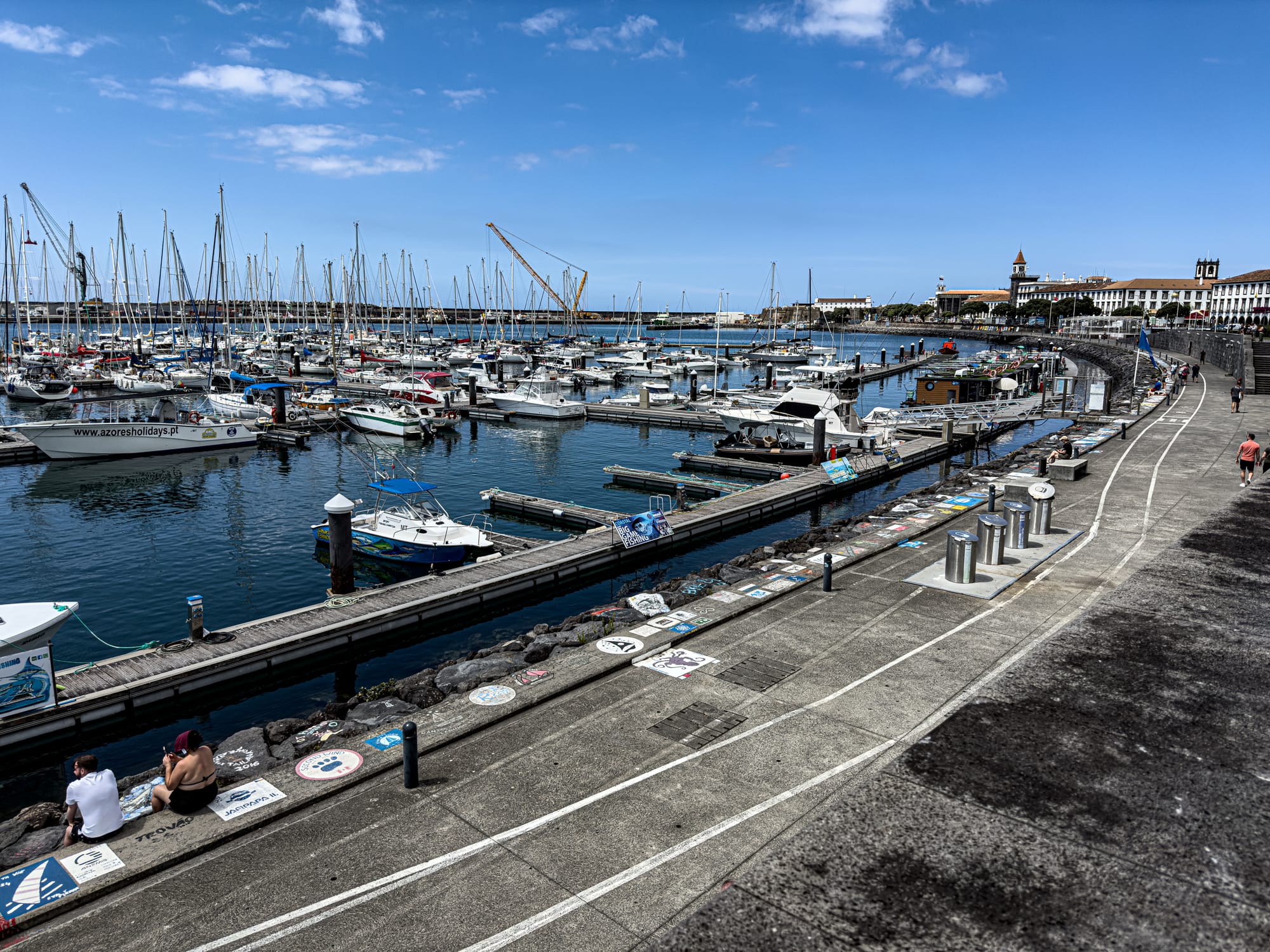
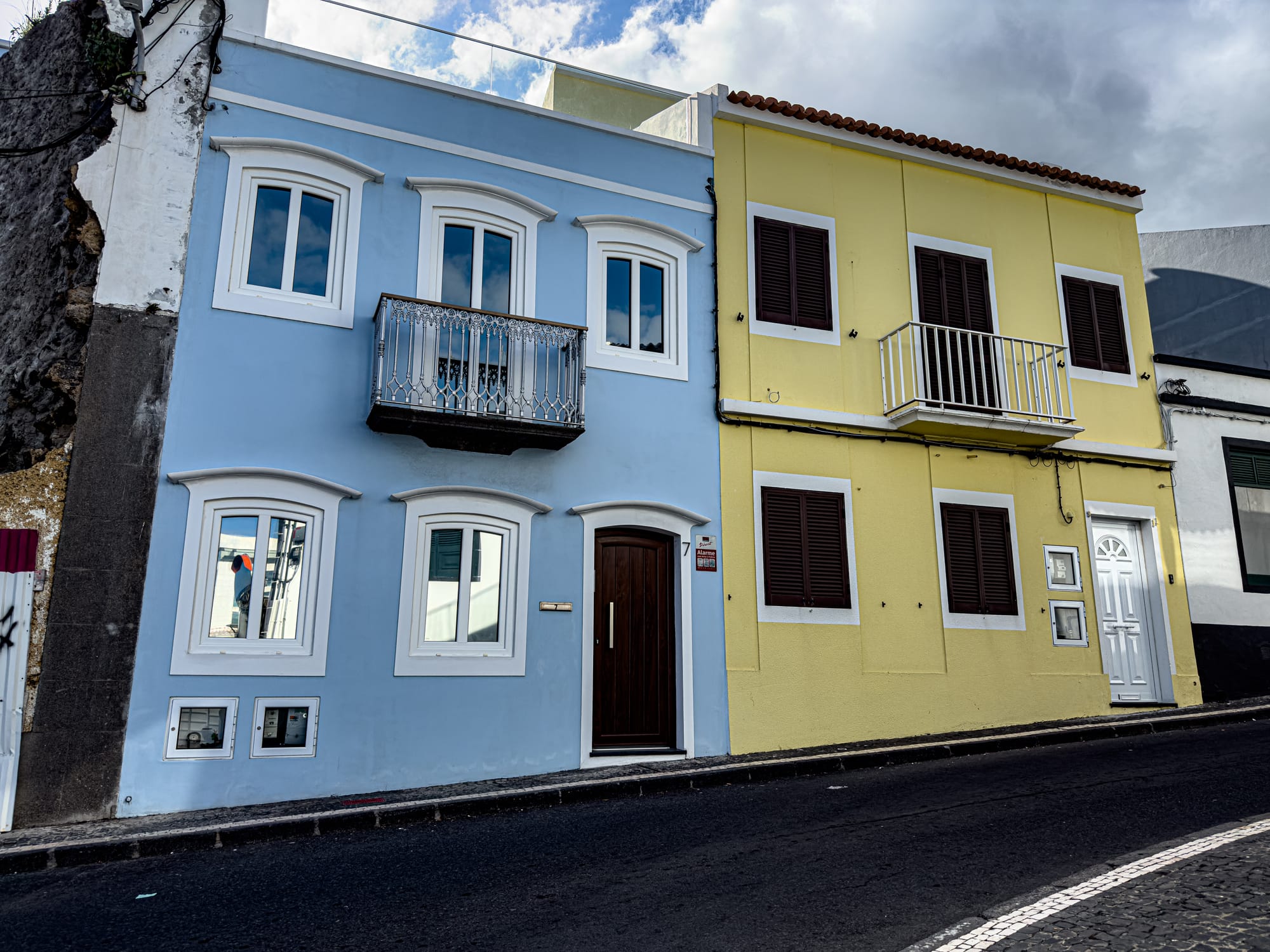
Ponta Delgada’s colorful marina and hillside streets reveal the city’s layered rhythms—nautical, domestic, and everyday
First impressions lean picturesque: tile-trimmed balconies, basalt-and-white façades, botanical gardens and plazas, churches and calçadas. But Ponta Delgada is not a preserved postcard. It's lived-in, worked-through, and visibly in flux. The streets tell a less tidy story: of modernization and uneven upkeep, of local life unfolding in parallel with tourism, of public works both flourishing and delayed.
Residential textures, everyday routes
Behind the harborfront and historic core, Ponta Delgada spreads across low hills in a mix of tight streets, postwar housing blocks, and painted terraces. There are public parks and civic buildings, bakeries and barbers, tire shops and schools. Some roads slope sharply; others feel like service lanes. In certain neighborhoods, the buildings wear their years. You might pass cracked tiles, graffiti, aging signage, or clusters of electrical cables in tangled knots.
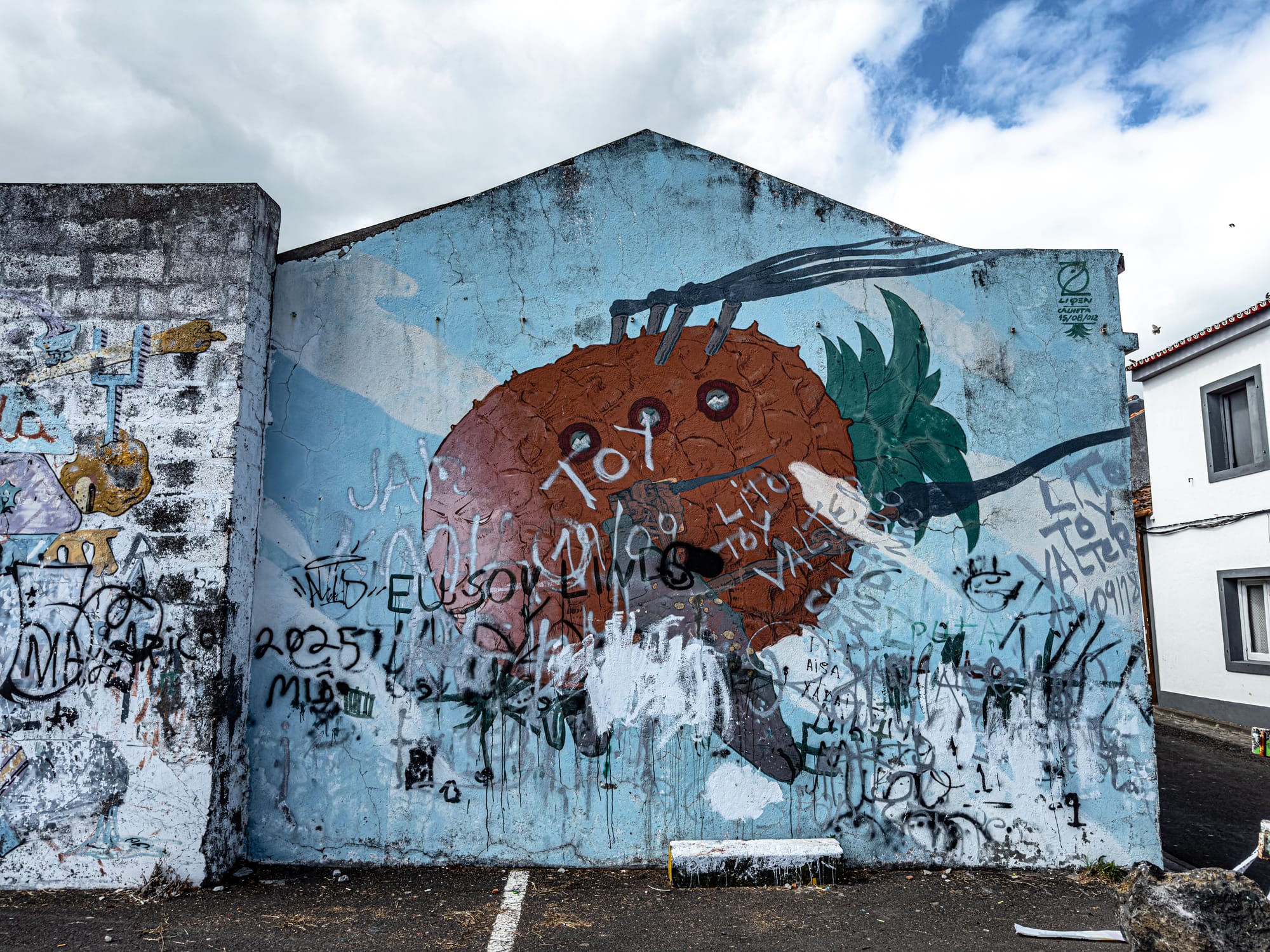
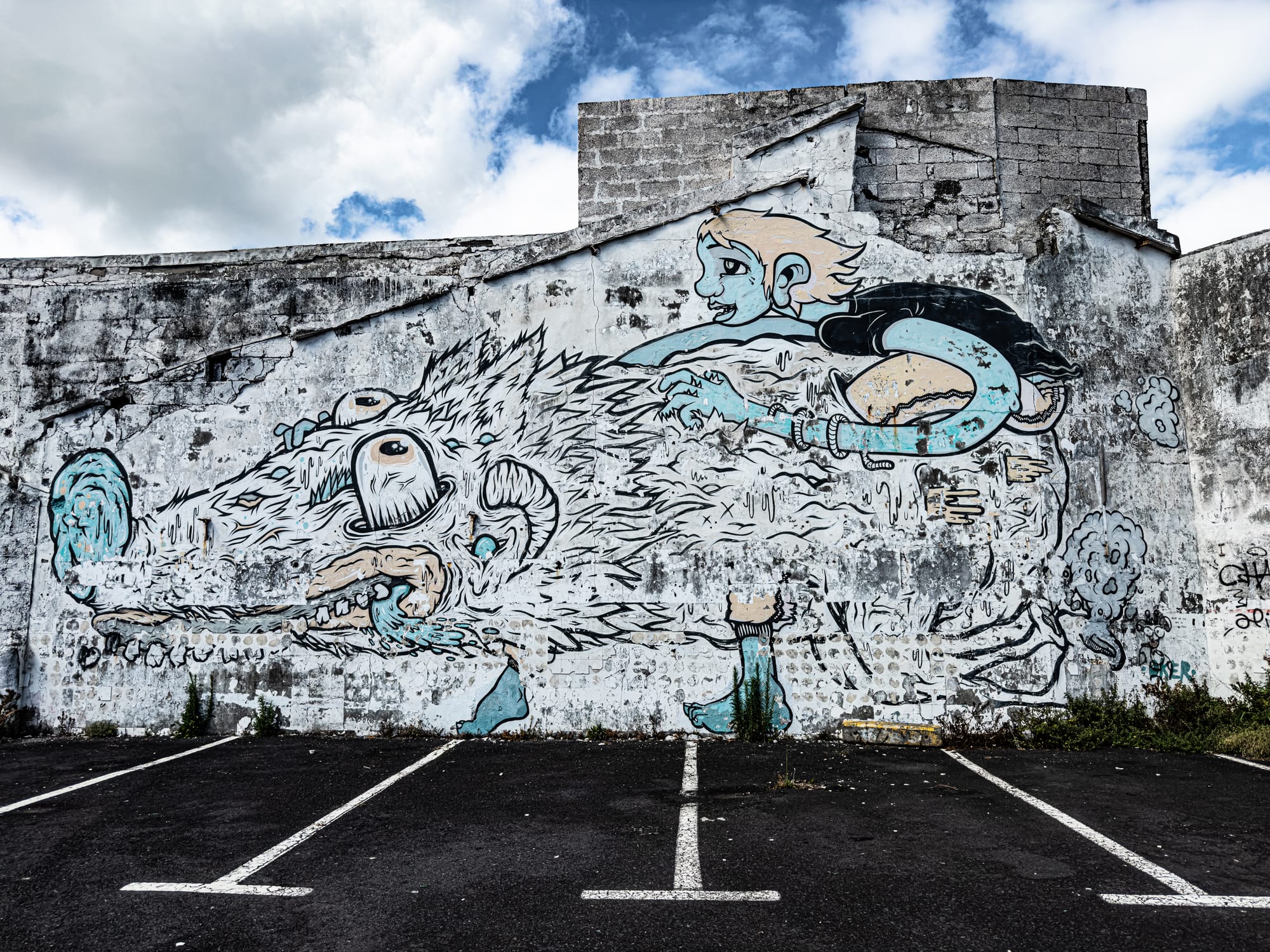
Two sightings on the outskirts of Ponta Delgada reveal a layered language of humor, critique, and everyday invention
There is dignity in these details. The working parts of the city are not hidden—they are part of the structure. You’ll see people hanging out on steps or sitting on walls, waiting for the bus, smoking, unloading trucks, cleaning storefronts, or watching the street. Sidewalk tiles buckle. Cars press close to curbs. Municipal signage appears hand-painted or retrofitted. And while some homes gleam with fresh coats of pastel paint, others bear the slow erosion of salt air and humidity.
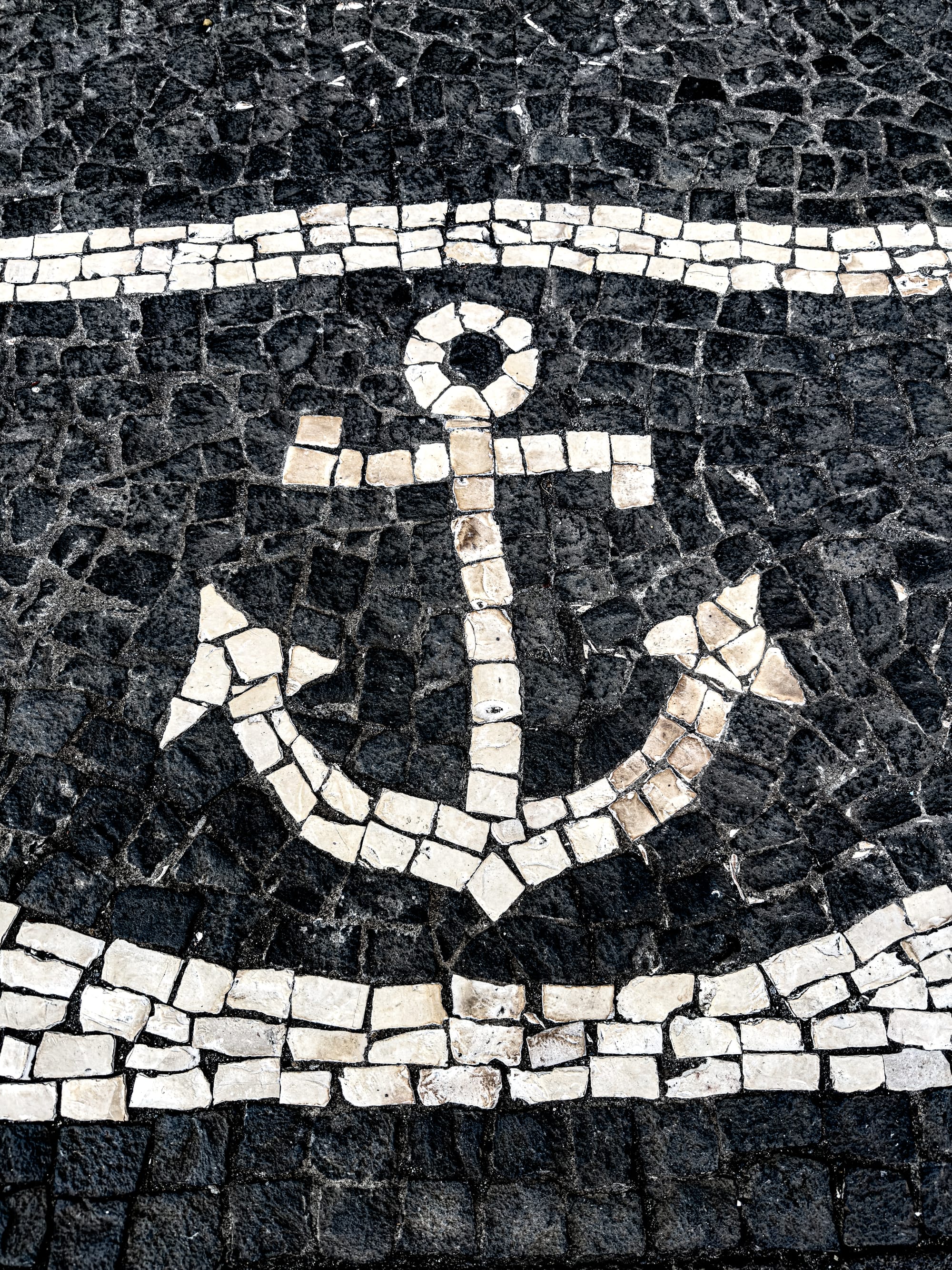
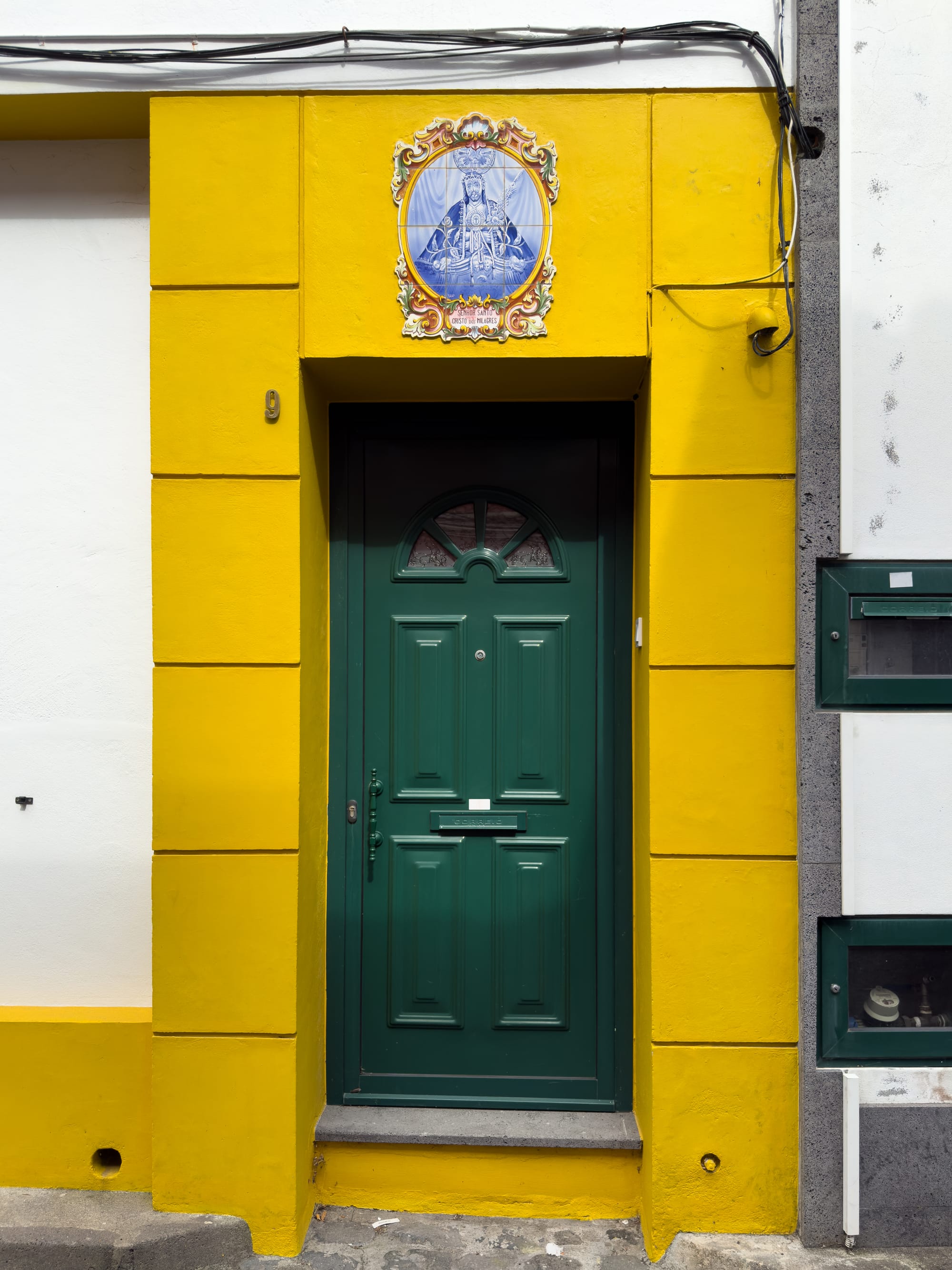
From stone mosaics underfoot to vivid doorways, Ponta Delgada’s details reveal a layered visual language rooted in place
None of this is exceptional. It’s simply Azorean life at ground level, in a city that is both small and central.
Layers of street art, commerce, and repair
One of the more striking visual layers of Ponta Delgada is its street art. Alongside government-funded murals and heritage azulejos, the town hosts an eclectic and expressive mix of paste-ups, wall-sized pieces, and more informal interventions.
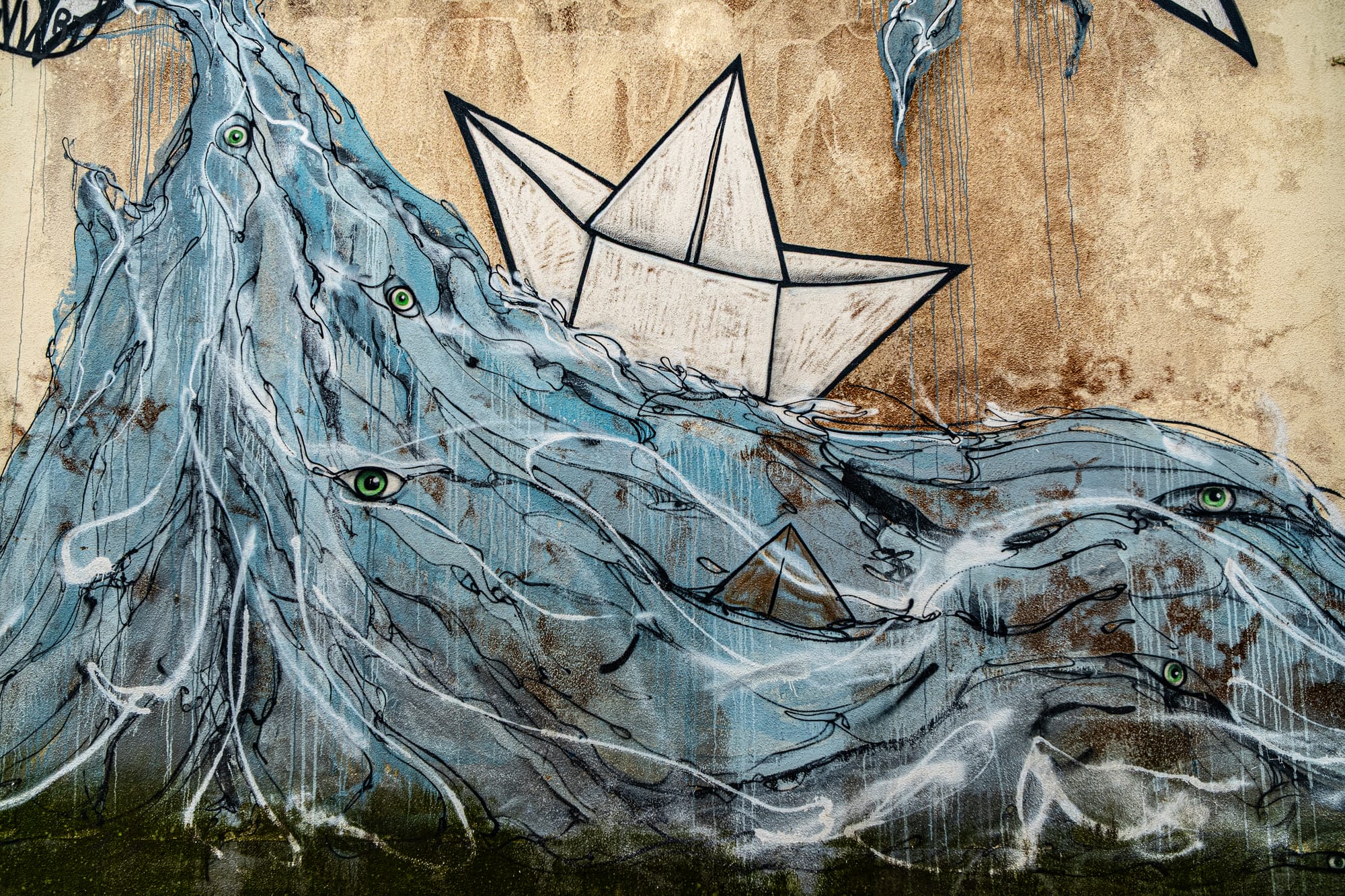
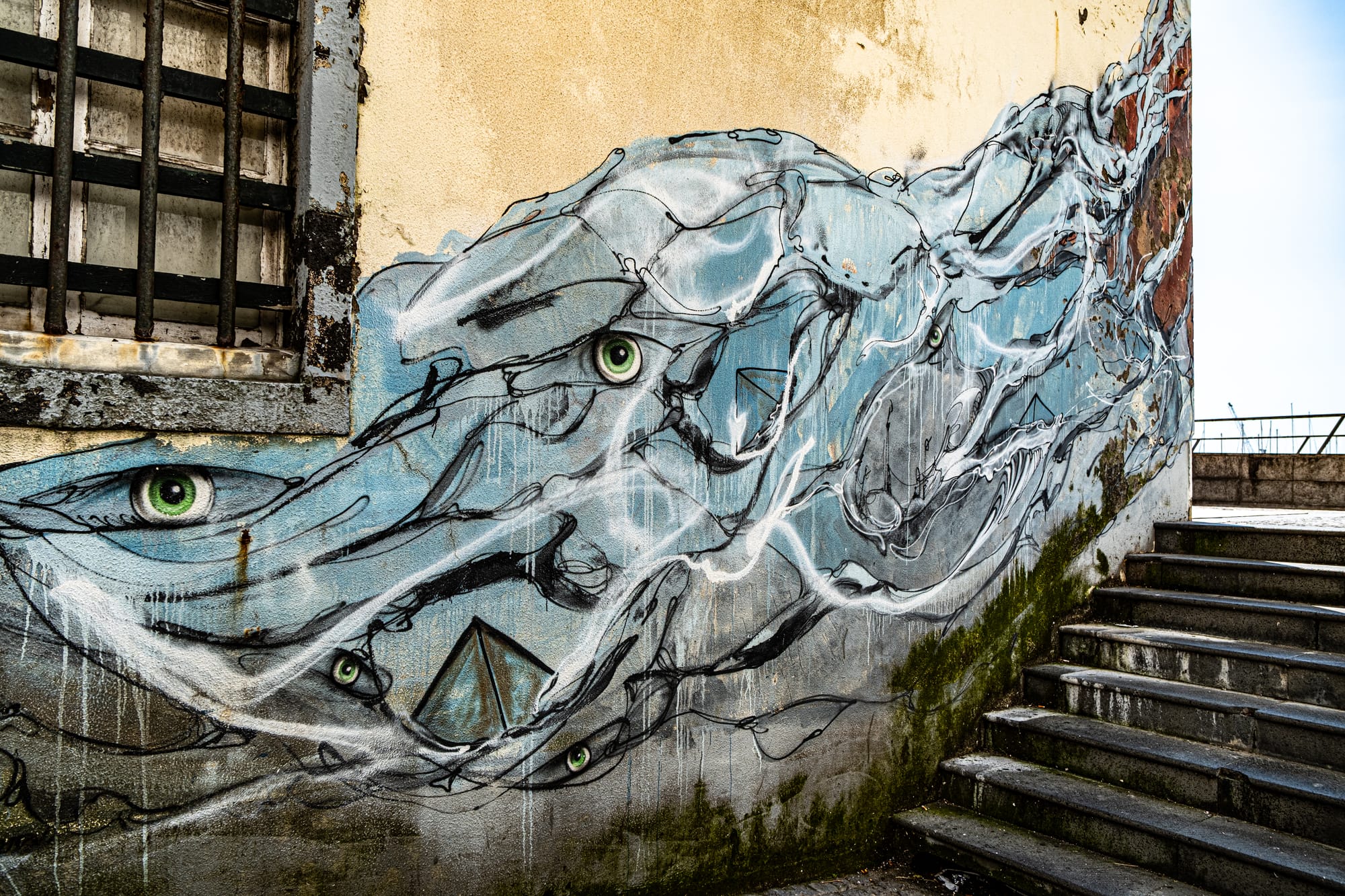
A layered mural near the waterfront in Ponta Delgada flows with watchful eyes, paper boats, and dreamlike current
The result is not a designated art district, but rather a living surface—marks made and remade, often in unexpected places.
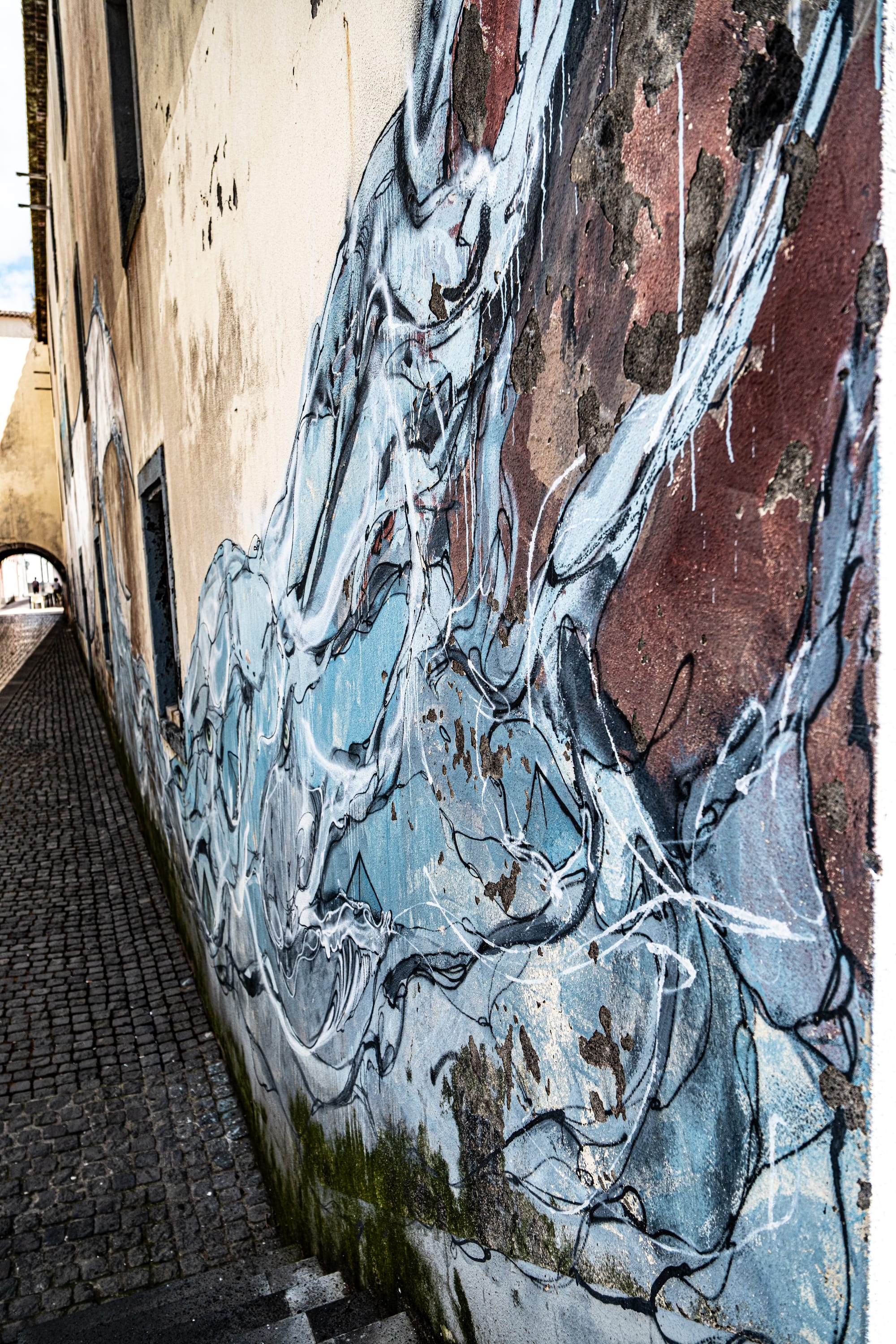
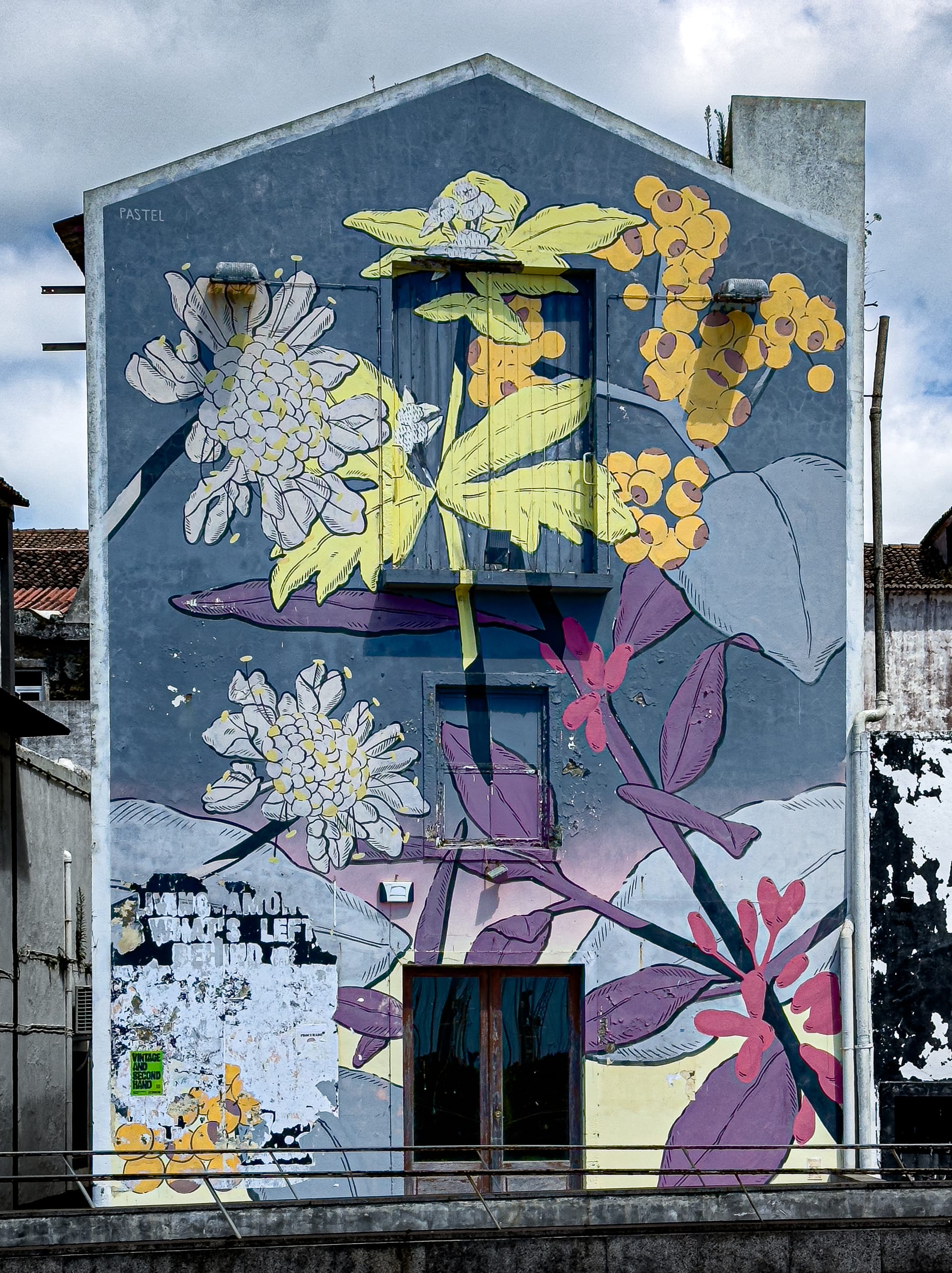
From narrow alleys to building facades, Ponta Delgada’s street art reveals both fluid abstraction and botanical precision
You’ll find finely detailed portraits fading on concrete, fantasy creatures wrapped around corner buildings, or text-based works half-covered by paint or time. Tags and scrawls mix with large commissions. Sometimes it's hard to tell which was sanctioned and which was improvised.
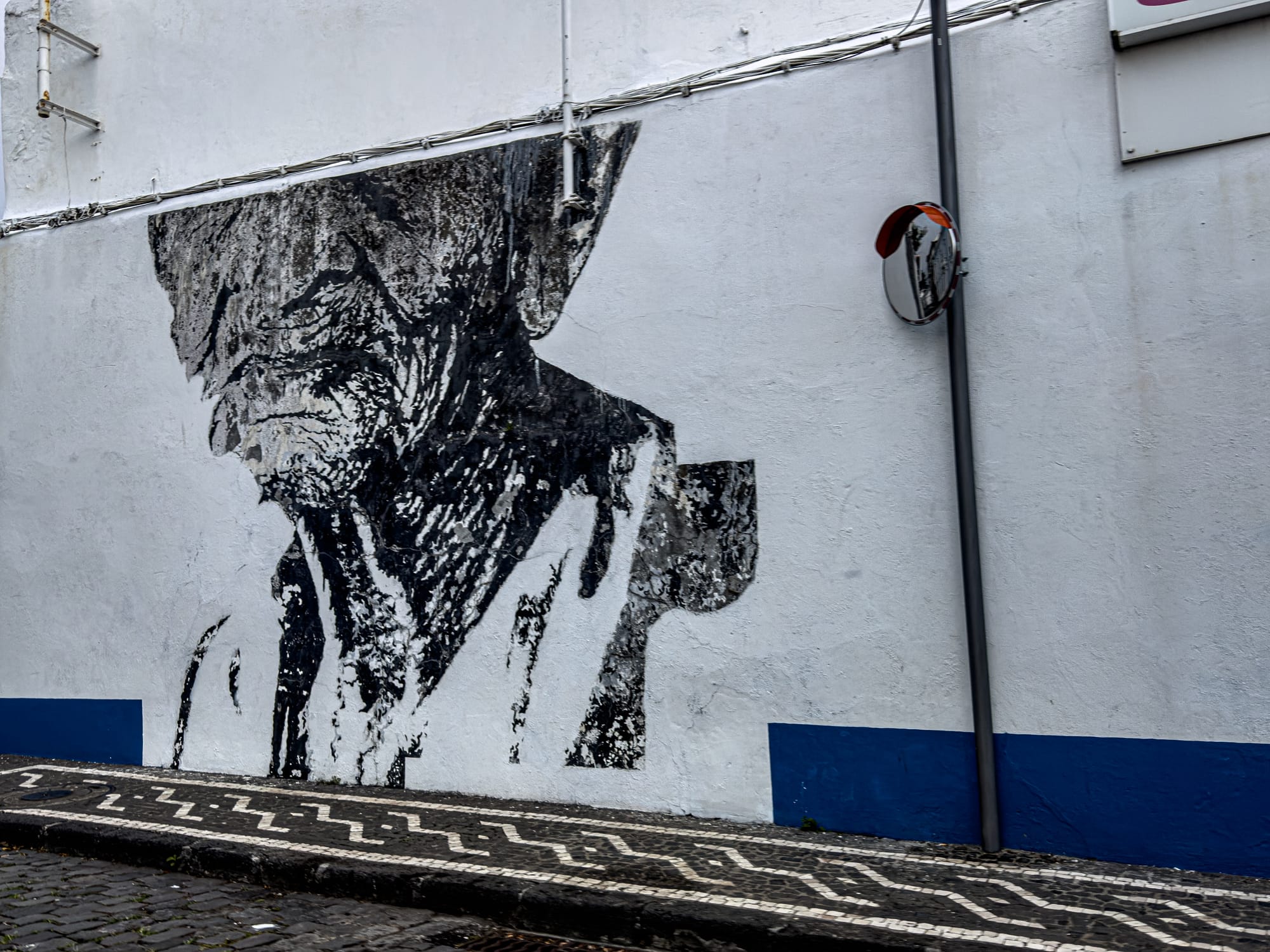
These visual conversations speak to a younger generation of Azoreans, to questions of identity, politics, and autonomy. They also map onto the visible labor of the city—scaffolding, fresh stucco, plumbing repairs, and the slow, steady work of making things last.
Shifting economies, shifting streets
Ponta Delgada carries the signs of economic transition. Tourism is visible—in hotels, signage, whale-watching kiosks, and foreign-registered vehicles. But it does not fully define the city. Many areas, especially inland or uphill from the harbor, feel shaped by logistics, schooling, commuting, and local services more than by tourist flow.
You’ll notice signs for driving schools, dentist offices, accounting firms. The local market isn’t set up for spectacle—it’s functional. Municipal posters advertise civic events, blood drives, community theater. There are abandoned buildings and sleek new builds. Construction sites and long-empty lots. Some spaces feel paused in mid-transition.
The harborfront itself has been reworked in recent decades, with mixed results.
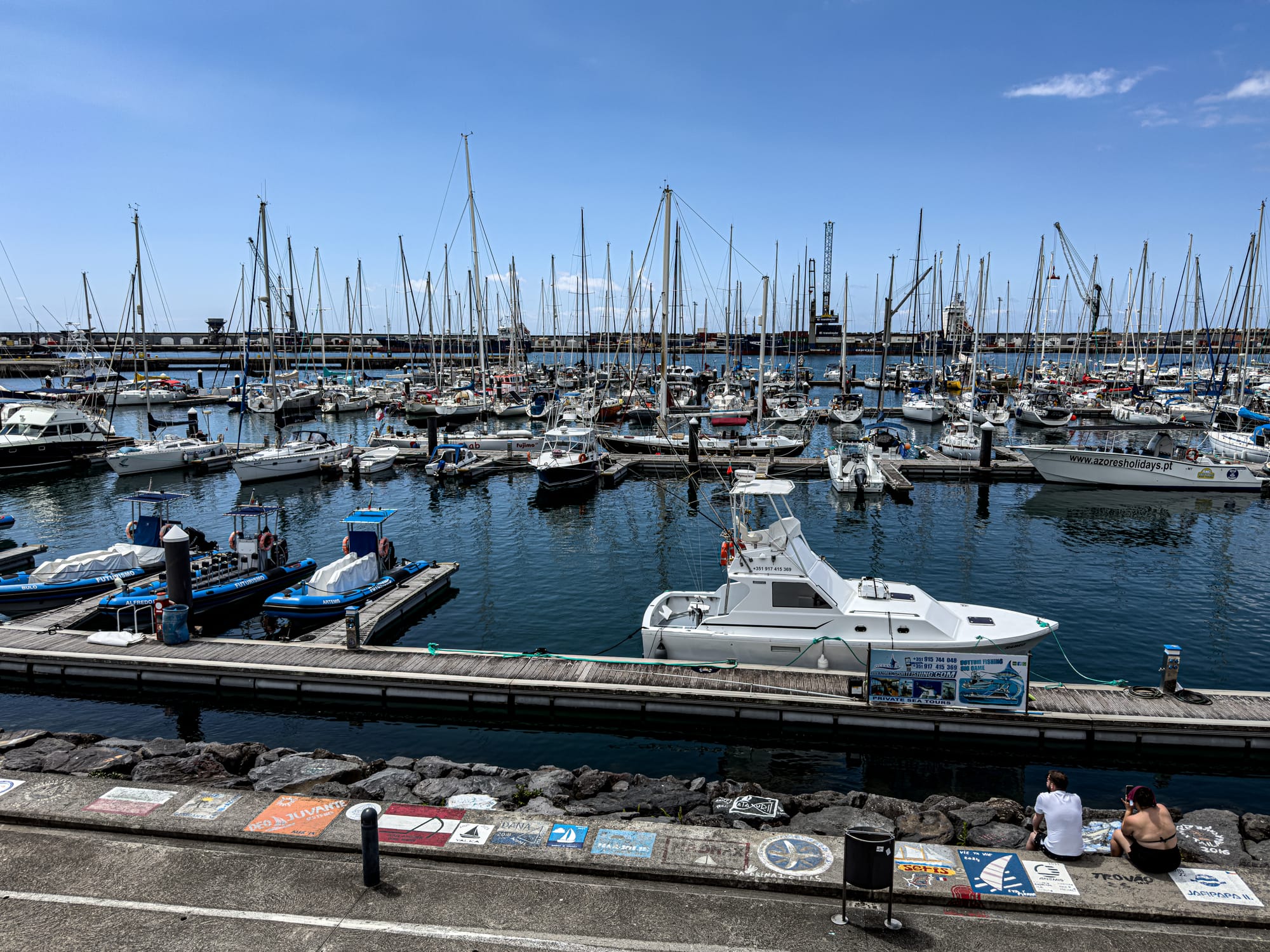
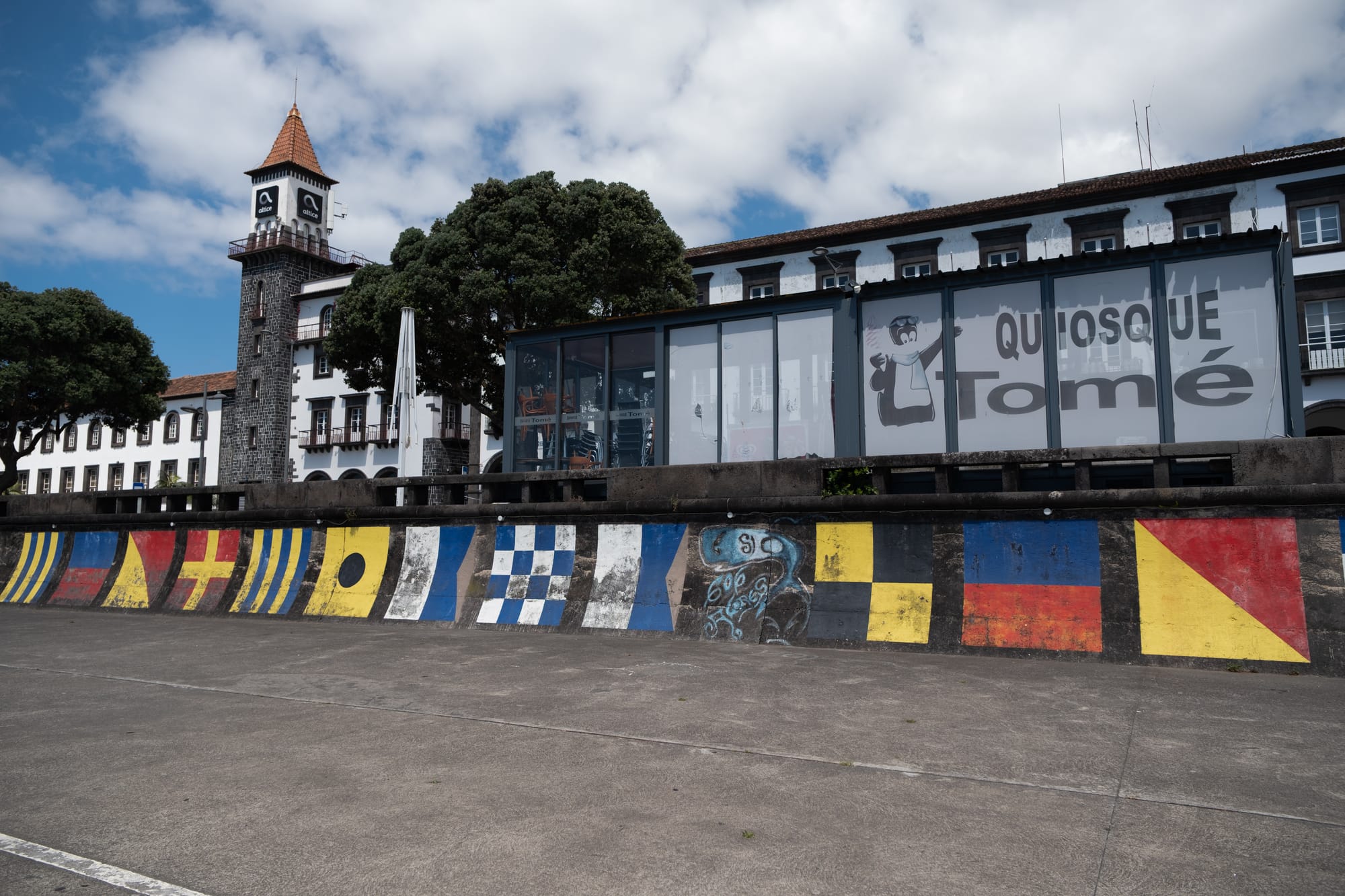
From the colorful codes of the marina wall to the sailboats in Ponta Delgada’s harbor, the waterfront is alive
Decorative tiles, sculpture, and clear wayfinding coexist with uninviting underpasses, shuttered kiosks, and surface parking. The marina is busy, and the port remains a commercial node, but certain areas feel disconnected, shaped by waves of planning rather than continuity.
Beyond the postcard: visible and invisible life
The surface experience of Ponta Delgada—a stroll along the promenade, a pastry on a leafy plaza, a glimpse of a mural—doesn’t reveal the full city. Talk to residents and you’ll hear different stories: housing pressures, employment precarity, the rise and strain of seasonal tourism, outmigration, and the balancing act of living in a place that’s often photographed but less often understood.
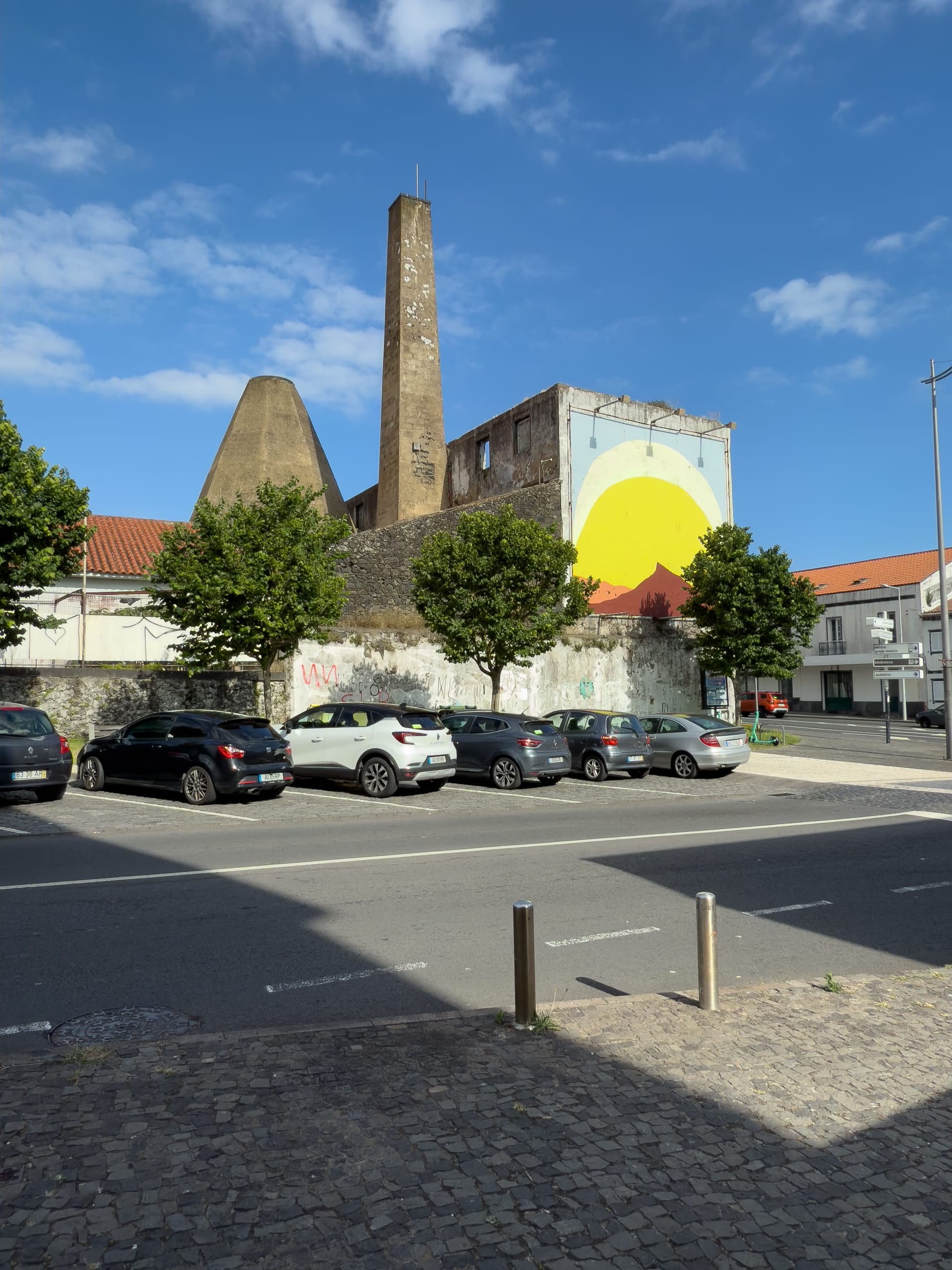
Locals point out areas where maintenance lags. Where rents have risen. Where younger people leave for mainland Portugal or abroad. Where cruise ship disembarkations flood certain businesses, leaving others untouched. Where heritage grants go to high-profile buildings, but everyday repairs are out of reach.
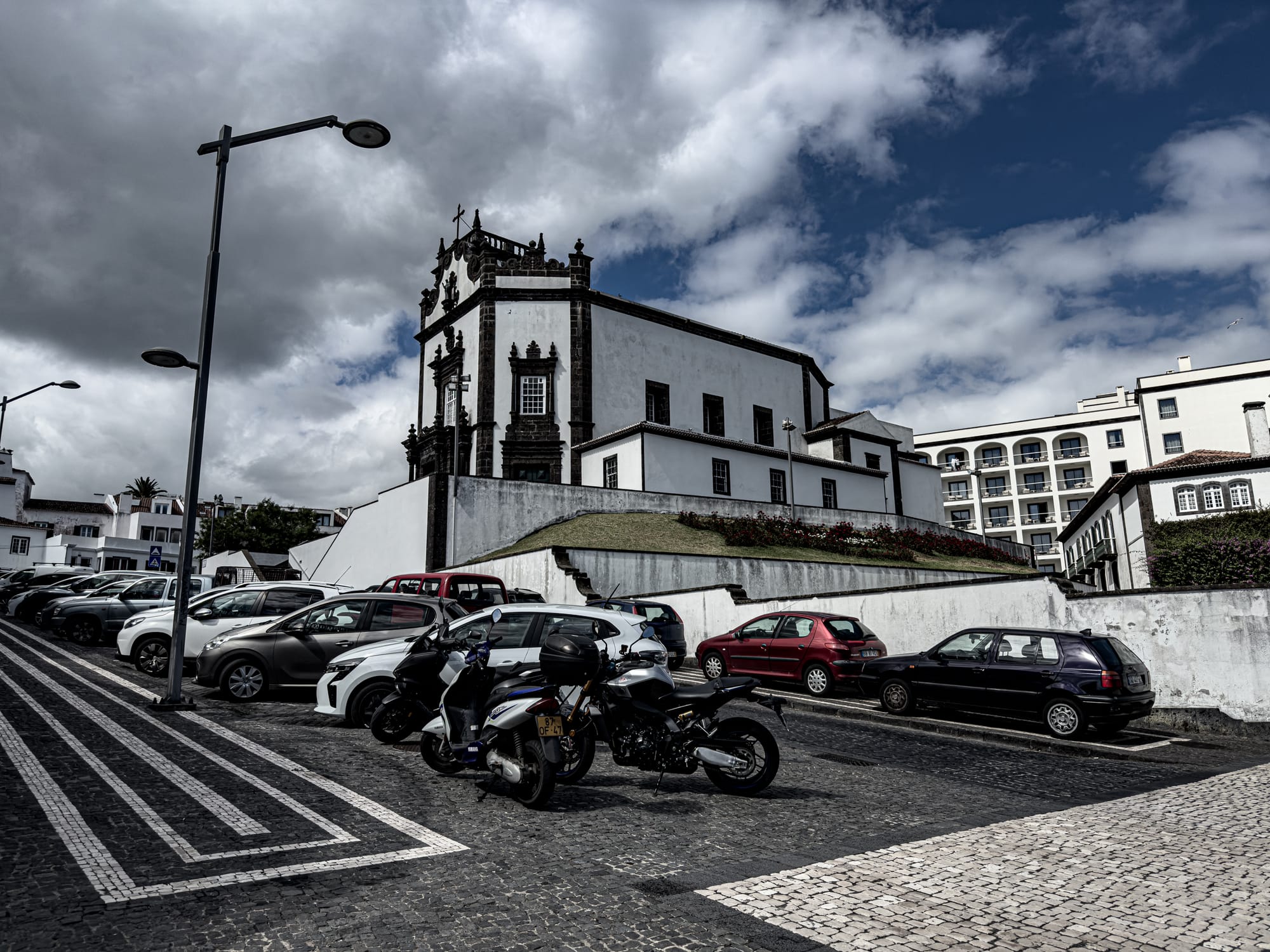
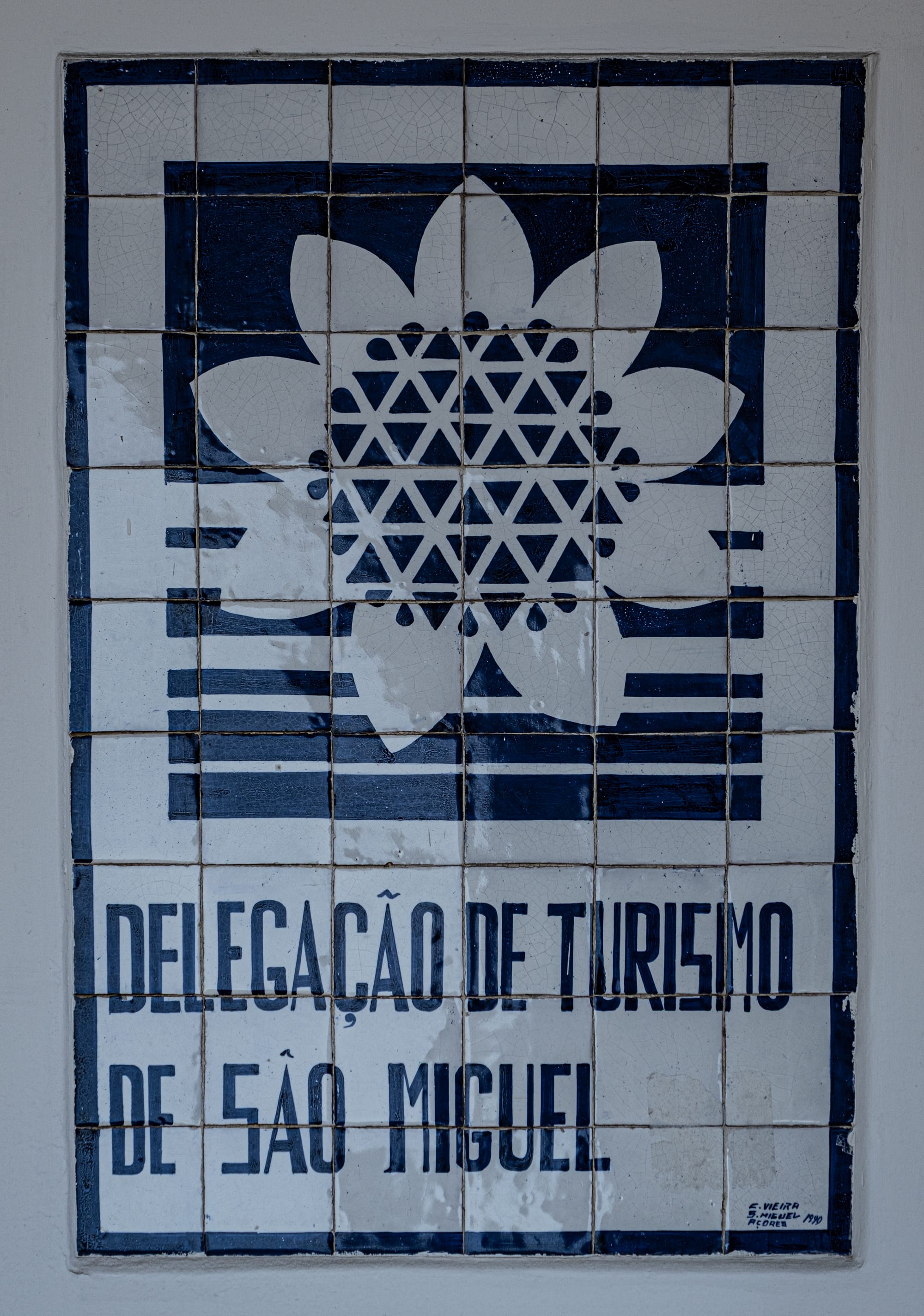
A quiet contrast between local rhythm and curated arrival
Still, this is not a city defined by absence or complaint. It is animated by adaptation. People make do, find ways, keep things running. Cafés fill with conversation. Kids walk to school in uniform. Old men play cards in shaded parks. Groceries are bought, repairs made, appointments kept.
From here, other directions
Many visitors use Ponta Delgada as a base. From here, it’s easy to access organized whale watching tours, most of which depart from the marina. The city is also close to the renowned pineapple plantations—a short drive or bike ride inland—where São Miguel’s unique method of growing pineapples in greenhouses can be seen up close.
Buses and tours head in all directions from the central terminal, while rental cars trace the island’s curves outward. But Ponta Delgada is not just a launchpad. It is a place to stay, watch, learn, walk, and return to.
It doesn’t flatten itself for tourists. It doesn’t hold back for locals. It remains a city with layered needs, histories, and futures, weathering changes with a steady mix of adaptation, visibility, and self-determination.
This makes it not just a gateway to São Miguel, but an introduction to the Azores on its own terms.






